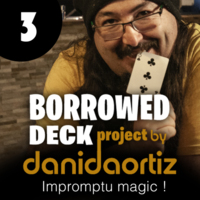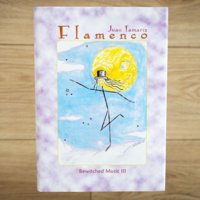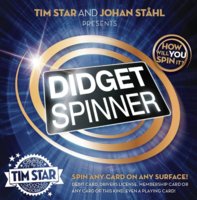Magic Magazine "Magic on Reality TV" March 2015 - Book
| List price: | |
| Price: | $5.07 |
| You save: | $1.43 (21%) |
TV Magic in Reality
By Alan Howard
In the last quarter of the 20th century, the arrival of a magic special on television was not a common occurrence. Most were annual events, with few other magic shows to be seen nationally on a regular basis. Now there are a lot more networks and there's a lot more magic - not just every year, but every week, often bringing wonders to people in their everyday lives.
The Magic of Levinson & Link
By Peter Samelson
Arguably the most successful writing duo in television, Richard Levinson & William Link also penned stories for books, films, and theater. The men responsible for magic-themed shows like Doug Henning's Merlin on Broadway and Blacke's Magic on TV had an amazing career that stemmed largely from their own interests in conjuring.
Heyday of Magic
By Mark Kalin
For the latest incarnation of the theatrical franchise, the producers of The Illusionists 1903 stepped back in time to re-create the Golden Age of magic. Mark Kalin tells the story behind the production, and he gives a description of the shows as they played this year in Australia.
Plus Updates on...
Bonus Content for the March Issue...
Marketplace
Twenty-six products are reviewed this month by Michael Claxton, Peter Duffie, Gabe Fajuri, Jared Kopf, Peter Pitchford, John Wilson:
Babel by Chris Philpott
The Art of the Con: How to Think Like a Real Hustler and Avoid Being Scammed by R. Paul Wilson
The Incredible Dr. Jaks by Robert L. Bluemle and Leo Behnke
Tommy Wonder's Two-Cup Routine by Tommy Wonder
Fair Play by Steve Haynes and Paul Harris
Mystery Solved by David Penn
Upgrade by Danny Weiser
Power Pull by Uday Jadugar
McCombical by Billy McComb
Five by Xeon Steel
Alan Shaxon: The Sophisticated Sorcerer by Alan Shaxon, with Scott Penrose and Stephen Short
Utsukushii by Fraser Parker
Voices by Jeff Prace
On/Off by Nicholas Lawrence and Sans Minds Magic
Charles Dickens Magician by Ian Keable
Butterfly Pass Project by Stephen Leathwaite
Spotlight on 101 Great Magic Acts by Tony Taylor
Phoenix Ashes by David Blanco and Asier Kidam
The Ultimate Book Test Act by Luca Volpe and Titanas Magic
Hidden Hand by Sean Fields
The Magic of Suzanne: the Castle Act by Suzanne
PS - I Love You by Steve Shufton
Creating Theatrical Magic by Max Howard
Si-Fi Project by Xiang Liu
Paul Fox: Master of Mystery - Magicol 188 from Magic Collectors' Association
Alchemist: Screwdriver by Taiwan Ben & SansMinds
First Look: The Controls Project
Liam Montier
Liam Montier has been a quietly creative force in magic for over fifteen years. Having started off pitching Svengali decks in a UK shopping mall, he soon landed a job at Kaymar Magic where he spent many happy years demonstrating tricks from a vast array of genres. Now having settled with Big Blind Media, Liam is a performer, teacher, lecturer, creator, author, creative consultant, and producer, and makes his full time living from magic. As a creator, Liam is known for his off-beat non-card magic, and his simplified, efficient approach to creating card magic. The Controls Project is the fifth entry in Liam's "Project" series, a set that aims to provide grounding for anyone interested in the fundamentals of great card tricks. The trick that is excerpted here, WWBD, demonstrates Liam's kind of routine: maximum effect with minimum moves and displacements.
First Look: Subtle Card Creations volume 5
Nick Trost
For more than fifty years, Nick Trost was a prolific creator of card magic. Magicians learned of Nick just before he turned twenty when he appeared on the February 1955 cover of The Linking Ring, with a "Hocus Pocus Parade" of tricks by Trost inside. He went on to publish hundreds of tricks throughout his life, and was the card trick columnist for The New Tops magazine for more than thirty years. He may be best remembered for his creation of packet tricks, more than thirty of which were marketed items. His effects were noted for their relative ease of handling and simplicity, relying on subtleties and basic card handling techniques rather than difficult sleights. This month, we have excerpted two items from the latest volume of The Subtle Card Creations of Nick Trost, a continuing series published by H&R Magic Books: The Dice Decider, Revisited and Blackjacked!
The Monk's Way: If X is True, Then Why Not Do Y
Steve Reynolds
Listening and responding is a key factor in growing as a creator and performer. When I develop a routine and share it with other magi, the inevitable comments ensue: "I would do it this way" or "Do you think that would fool anyone?" or "Have you ever thought of this?" It's easy to get defensive about your own work. But after the dust settles and the mind begins to ponder, those comments bubble to the surface and become valuable tools. The same is true when listening to your audience. Their comments can be valuable as well, in so far as providing a glimpse into what they care about, what details they focus on, what makes them tick as spectators. Once you have gained this unique insight, ask yourself: If X is true, then why not do Y? This version of Larry Jennings' Ambidextrous Travelers is an example of what can be gained from asking this kind of question.
Loving Mentalism: Eight Card Tarot
Ian Rowland
This month's intriguing slice of mentalism enables you to give anyone a highly accurate tarot card reading, even if you've never given a reading before in your life. What's more, you only need eight cards - a lot easier to carry around than a full tarot deck! There's also a powerful double divination involved. In the course of your reading, you mention just two specific tarot cards. These turn out to be the very same cards selected and hidden by the spectator at the start of the reading. There's no fishing or guesswork, and the spectator doesn't have to say or write anything.
Bent on Deception: Instant Gratification
Mike Bent
We live in an age when information is literally at our fingertips - and if it isn't, we're pissed. You know the feeling: you google something and if the information doesn't immediately show up, you're sure that the entire Internet is broken or out to get you. Or maybe your search turns up a link, but you have to scroll down the page to find it. Admit it, you get annoyed. Before the Internet, we had to really search for what we wanted, or we had to be patient and wait for it to come along. All this instant gratification has its pluses and minuses. One of the biggest downsides is an expectation that we can instantly develop our magic routines.
Classic Correspondence: H. Adrian Smith to John Snyder
Mike Caveney
No conversation about the great magic libraries of the past 100 years would be complete without including the name H. Adrian Smith. Early on, Harold Smith decided that just having a large book collection would not satisfy him. He wanted a comprehensive magic library that covered every facet of the art, with books written in every language - a tall order indeed. In August 1937, Harold visited the home of Dr. Milton A. Bridges in New York City to view his vast collection of magic books. Later, in his TOPS magazine column ("Magic Books of Another Day" which ran from 1936 to 1940), Harold wrote, "The completeness of the collection fairly takes one's breath away." Two years later, Milton Bridges died at just 45 years of age. Shortly thereafter, Harold Smith was faced with the biggest decision of his life. He was 31 years old, unmarried, and now had the opportunity to purchase what he considered to be the finest magic library in America. Adding these 5,000 books would triple the size of his current library. Where would he put them all? Where would he get the money? An opportunity like this comes along once in a lifetime and he hated to pass it up. So he didn't.
For What It's Worth: The Cheese Trap
Mark Kornhauser
Long ago and far away, Jean Eugène Robert-Houdin wrote: "A prestidigitator is not a juggler. He is an actor playing the part of a magician." And for the past 150 years or so, this definition has been the holy grail for magicians' identity. It may be time to reconsider. It turns out, the intent of Robert-Houdin's statement, when taken in context, was not meant to be a ringing endorsement of the "method" school of acting, but rather, an attempt to clarify the difference between a technical performer and an artist. Nonetheless, magicians embraced the role of a wonderworker as the core - and often sole - theatrical identity of the magician. And while the value of establishing the magician as an actor is significant, the role of the actor is fair to question.
Walkabout Soup: Max Maven's Most Memorable Advice
Simon Coronel
Back in 2009, I performed at The Magic Castle for the second time. The entertainment director at the time was Max Maven. Max wasn't a total stranger at this point, but he still very much qualified for "living legend" status. I was very much a newbie at the Castle, so being booked by Max was more than a little intimidating. As entertainment director, Max usually went to watch the week's shows on Tuesday night, checking in on the acts he'd booked and making sure they were up to standard. My turn came, and I managed to make it through the show without anything going wrong. Afterward, I went backstage to nervously await Max's feedback. There was a knock on the door. I opened it. There was Max. I looked at him. He looked at me. I waited for him to say something. He paused, smiled, and said, "Well, you can stay until Sunday." I grinned with relief. He continued, "I also have notes, if you're interested."
ASK HERE
Featured Magic Tricks
(29% OFF)
WANT MORE???
BLIZZARD IS HERE

Act Builder beta












































